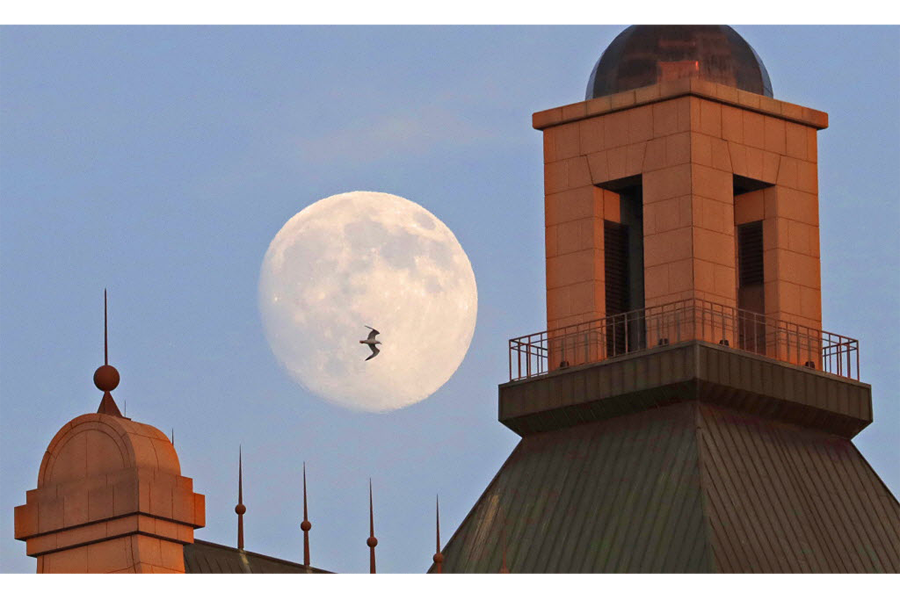Tonight, the Full Buck Moon rises
Loading...
Just 29.5 days after the last full moon, a large, bright orb will rise against the dark sky again tonight (July 19).
Native Americans gave the July full moon the name Full Buck Moon because it marks the time of year when new, fuzzy antlers push out of the foreheads of buck deer. As thunderstorms also are most frequent during July, the full moon is also often called the Full Thunder Moon.
Whether or not there are clear skies above, you might not actually see the full moon at its peak. The moon is completely full at 6:57 p.m. EDT on Tuesday, but it doesn't rise above the horizon until around 8:00.
But moon-gazers won't miss too much, as the moon typically appears full for about a 48-hour window around the astronomical moment of the true full moon.
A full moon occurs when the Earth-facing side of the moon is completely lit up by the sun. This happens when the moon is on the opposite side of the Earth from the sun, so the three bodies form a line.
Now that description may sound a bit like the explanation for a lunar eclipse, when the Earth briefly shadows the moon from sunlight. Lunar eclipses do occur only on full moons, but not every full moon is also an eclipse. That's because the moon's orbit around the Earth is inclined by about 5 degrees off of the Earth's own orbit around the sun. As a result, the full moon actually passes above or below Earth's shadow most of the time.
Lunar eclipses only occur two to four times a year, when the moon passes at least partially through the planet's shadow. And just about 35 percent are total eclipses, when the moon is entirely blocked from sunlight by the Earth. The last total eclipse was in September 2015 and the next won't be until January 2018.
Tonight, the moon will appear full to viewers almost all over the globe, but there are some exceptions.
The full moon lies nearly on the opposite side of the Earth from the sun, which means that its path across the night sky in July is similar to the sun's path in the January daytime sky. In January, the sun is not visible in some of the northernmost regions of Earth (in what is called Arctic winter). Likewise, the July full moon is too far south in the sky to be seen from those same latitudes.
Because the moon will reach its full phase before rising over the eastern horizon for viewers in the United States, what will appear will actually be a (barely) waning gibbous moon.
When the moon is half or more illuminated, it's called a gibbous moon. When it's less than half lit up, it's called a crescent moon.
The lunar phase cycle is 29.5 days, so the next full moon will fall on August 18 at 5:26 a.m. ET. In the meantime, the amount of the moon that is illuminated will shrink as the moon "wanes" down to a new moon, and then will increase again as it "waxes."






